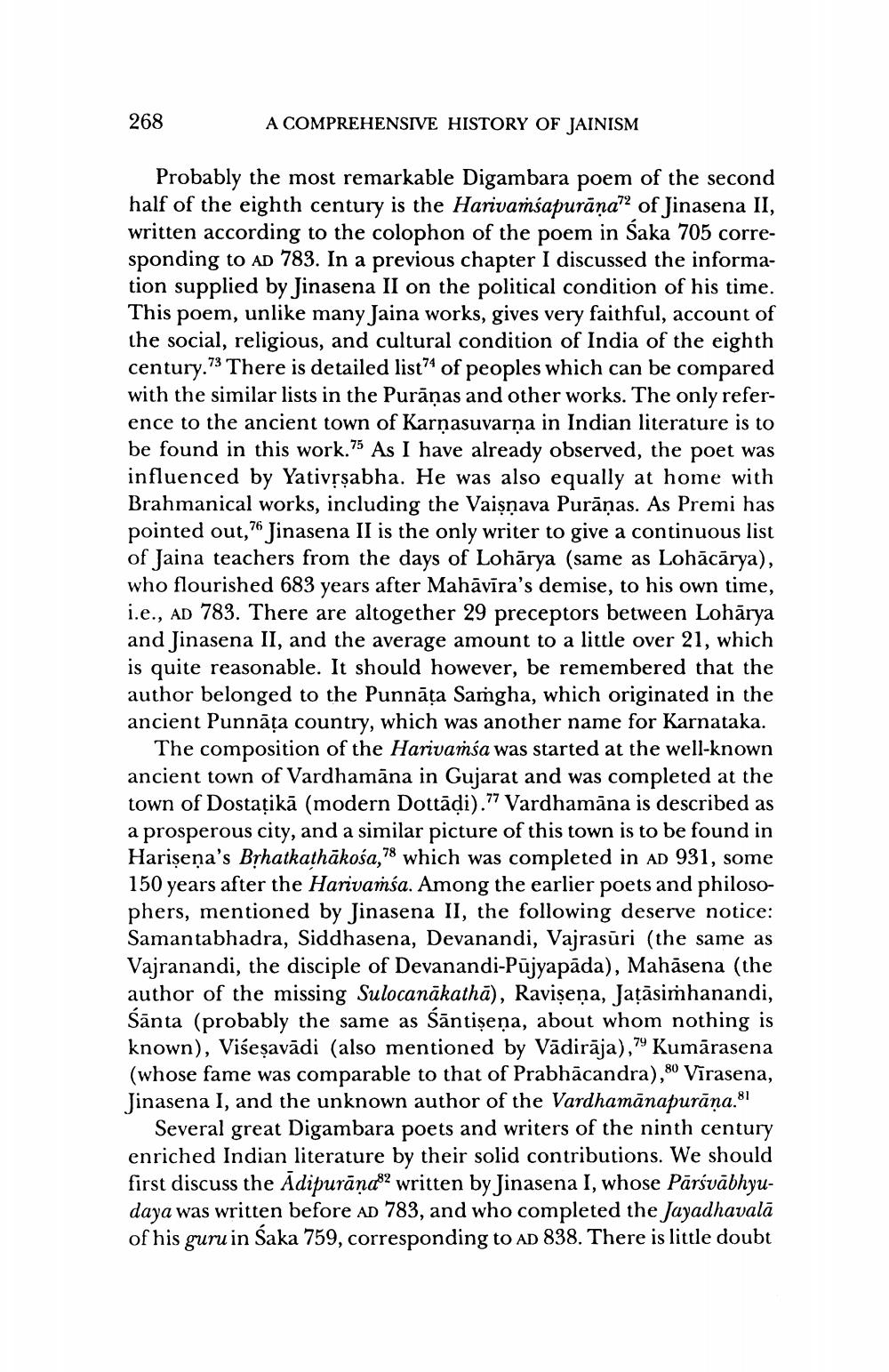________________
268
A COMPREHENSIVE HISTORY OF JAINISM
Probably the most remarkable Digambara poem of the second half of the eighth century is the Harivamsapurāna72 of Jinasena II, written according to the colophon of the poem in Saka 705 corresponding to AD 783. In a previous chapter I discussed the information supplied by Jinasena II on the political condition of his time. This poem, unlike many Jaina works, gives very faithful, account of the social, religious, and cultural condition of India of the eighth century.73 There is detailed list of peoples which can be compared with the similar lists in the Purāṇas and other works. The only reference to the ancient town of Karnasuvarna in Indian literature is to be found in this work.75 As I have already observed, the poet was influenced by Yativrṣabha. He was also equally at home with Brahmanical works, including the Vaisnava Purānas. As Premi has pointed out,75 Jinasena II is the only writer to give a continuous list of Jaina teachers from the days of Lohārya (same as Lohācārya), who flourished 683 years after Mahāvīra's demise, to his own time, i.e., AD 783. There are altogether 29 preceptors between Lohārya and Jinasena II, and the average amount to a little over 21, which is quite reasonable. It should however, be remembered that the author belonged to the Punnāta Samgha, which originated in the ancient Punnāta country, which was another name for Karnataka.
The composition of the Harivassa was started at the well-known ancient town of Vardhamāna in Gujarat and was completed at the town of Dostaţikā (modern Dottādi).77 Vardhamāna is described as a prosperous city, and a similar picture of this town is to be found in Harisena's Brhatkathākośa,78 which was completed in AD 931, some 150 years after the Harivamśa. Among the earlier poets and philosophers, mentioned by Jinasena II, the following deserve notice: Samantabhadra, Siddhasena, Devanandi, Vajrasūri (the same as Vajranandi, the disciple of Devanandi-Pujyapada), Mahasena (the author of the missing Sulocanākathā), Ravisena, Jatāsimhanandi, śānta (probably the same as sāntișeņa, about whom nothing is known), Visesavādi (also mentioned by Vădirāja),79 Kumārasena (whose fame was comparable to that of Prabhācandra),80 Virasena, Jinasena I, and the unknown author of the Vardhamānapurāņa.81
Several great Digambara poets and writers of the ninth century enriched Indian literature by their solid contributions. We should first discuss the Adipurāņas written by Jinasena I, whose Pārsvābhyudaya was written before AD 783, and who completed the Jayadhavalā of his guru in Saka 759, corresponding to AD 838. There is little doubt




